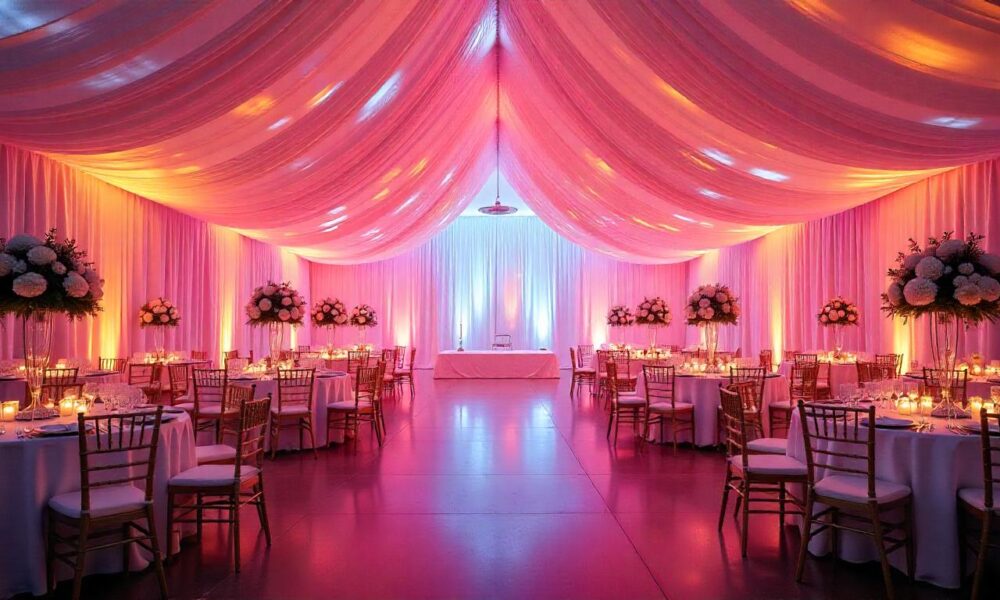Casting, one of the oldest and most intricate forms of manufacturing, has seen remarkable innovations over time, especially with the advent of modern casting rooms like the back casting room. These specialized spaces are designed to ensure precise casting, improve efficiency, and enhance safety. As industries evolve, especially those requiring high-quality, defect-free components, the demand for effective casting rooms has grown. Here’s a detailed exploration of the back casting room, its unique features, benefits, and its impact on various industries.
Introduction to Back Casting Room
A back casting room is a specialized environment tailored for the casting process, particularly for methods requiring enhanced precision and high-quality outputs. These rooms are equipped with advanced technology and safety measures, allowing technicians to cast metals or other materials into complex shapes accurately and efficiently. The controlled environment of a back casting room minimizes contaminants, optimizes temperature control, and facilitates the handling of high-quality cast products.
In recent years, the back casting room has become essential in industries like aerospace, automotive, and medical device manufacturing, where even the smallest discrepancies in product dimensions can lead to significant quality or safety issues.
The Evolution of Casting Techniques
Historically, casting was a rudimentary process involving molten metals poured into hand-carved molds. Over time, casting technology evolved with the invention of more sophisticated tools and methods. Ancient civilizations like the Egyptians and Mesopotamians were pioneers in early casting techniques. With the industrial revolution, casting methods advanced with better temperature control, the use of more refined molds, and mechanized pouring methods, paving the way for the back casting room concept we know today.
Key Components of a Back Casting Room
A well-equipped back casting room includes several critical elements that streamline the casting process, maintain consistency, and ensure safety.
- Equipment and Tools: Essential tools in a back casting room range from melting furnaces and pouring ladles to specialized molds and protective gear for operators. Modern rooms are often equipped with automated machinery that can precisely pour materials, reducing human error.
- Materials Used: Depending on the type of casting, a variety of metals like aluminum, steel, and iron are used, as well as composite materials and even plastics in some instances. Refractory materials are often employed to create molds that can withstand the intense heat of molten metals.
Benefits of Using a Back Casting Room
Casting in a controlled environment offers numerous advantages. Here’s why back casting rooms are valuable in modern manufacturing:
- Precision: Maintaining a controlled environment significantly reduces deviations, resulting in uniform and precise castings.
- Efficiency: Streamlined workflows in a dedicated space, along with automated tools, enhance productivity and reduce time spent on each casting.
- Safety: Designed with safety as a priority, back casting rooms often include fire-retardant materials, proper ventilation, and protective equipment for workers, minimizing risks associated with high-temperature casting.
Types of Casting Methods
Different types of casting methods can be implemented in a back casting room, each catering to specific materials and products.
- Sand Casting: This is one of the most traditional forms of casting, where sand molds are used to create various shapes. Sand casting is highly versatile, suitable for metals with high melting points.
- Investment Casting: Also known as precision casting, this technique uses wax patterns and ceramic molds to achieve intricate details and is frequently used for complex components in aerospace and automotive industries.
- Die Casting: Often used in mass production, die casting involves forcing molten metal into molds under high pressure, allowing for high-quality, consistent results ideal for automotive and consumer products.
Importance of Temperature Control
In a back casting room, controlling the temperature is paramount. The right temperature ensures that the metal flows smoothly and fills every intricate detail of the mold, enhancing the quality and durability of the finished product. Additionally, keeping the mold at a controlled temperature helps prevent defects like warping and cracking, which are common when metal cools too quickly or unevenly.
Essential Safety Measures in Back Casting Rooms
Due to the high temperatures and hazardous materials involved, strict safety protocols are vital. Safety gear, including heat-resistant clothing, gloves, and face shields, is mandatory for all workers. Additionally, back casting rooms are often outfitted with exhaust systems to prevent toxic fumes from accumulating, creating a safer workspace for employees.
Common Challenges and Solutions
Casting, while effective, comes with several inherent challenges, including material shrinkage and the risk of contamination. A back casting room’s controlled environment can alleviate these issues. Material shrinkage is often managed by compensating with additional material or by refining cooling rates, while contamination is minimized through strict cleanliness and air filtration measures.
The Role of Skilled Technicians
While automation has streamlined many aspects of casting, skilled technicians remain indispensable. These professionals are trained to manage casting equipment, troubleshoot issues, and ensure that each product meets rigorous quality standards. In back casting rooms, technicians monitor temperatures, inspect molds, and adjust parameters as needed to maintain product consistency.
Quality Control in Casting
Maintaining a high level of quality control is critical in back casting rooms. Several techniques, including non-destructive testing (NDT) and X-ray inspection, help identify internal flaws in cast products without damaging them. This level of scrutiny ensures that every product meets strict standards, minimizing waste and increasing efficiency.
Back Casting Room Layout and Design
Designing a back casting room involves optimizing space to enhance workflow, facilitate movement, and reduce bottlenecks. Key considerations include ensuring enough room for large machinery, clear pathways for transporting materials, and efficient ventilation systems to maintain air quality.
Modern Technologies in Back Casting
Advancements in technology, such as 3D printing, robotics, and automation, have transformed the casting process. In many back casting rooms, robots are used to handle repetitive or dangerous tasks, increasing safety and efficiency. 3D printing is also being adopted for creating highly detailed molds, which allows for even greater precision in the final product.
Environmental Impact and Sustainability
As industries become more environmentally conscious, sustainable practices are being integrated into back casting rooms. Recycling metal scraps and reusing molds where possible are just a few methods to reduce waste. Many facilities are also shifting towards energy-efficient furnaces and implementing air purification systems to lower emissions.
How Back Casting Room Affects Product Quality
The controlled environment of a back casting room directly impacts the quality of products, enabling manufacturers to achieve a high degree of uniformity. This is particularly important for industries like aerospace, where even minor imperfections can have significant consequences.
Key Industries Utilizing Back Casting Rooms
Industries such as aerospace, automotive, and medical equipment manufacturing frequently rely on back casting rooms to produce precision parts. Each of these fields requires consistent, high-quality components, making controlled casting environments indispensable.
Conclusion: The Importance of Back Casting Room
The back casting room is a modern marvel that has optimized the casting process, making it safer, more efficient, and incredibly precise. By controlling variables like temperature, contaminants, and material flow, back casting rooms enable industries to produce high-quality, uniform components that meet today’s demanding standards. As technology advances, back casting rooms are expected to incorporate even more innovative tools and processes, ensuring that they remain central to precision manufacturing for years to come.
FAQs on Back Casting Room
What is a back casting room? How does temperature control affect casting quality? What are the benefits of using a back casting room? Which industries rely on back casting rooms the most? What types of casting are done in back casting rooms? What modern technologies are being used in back casting?











